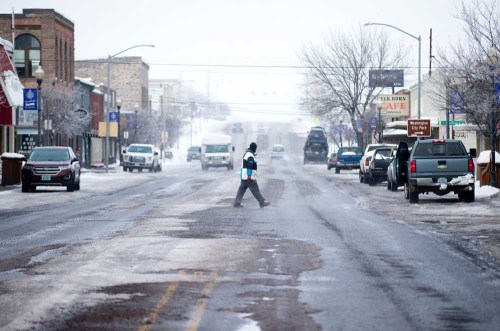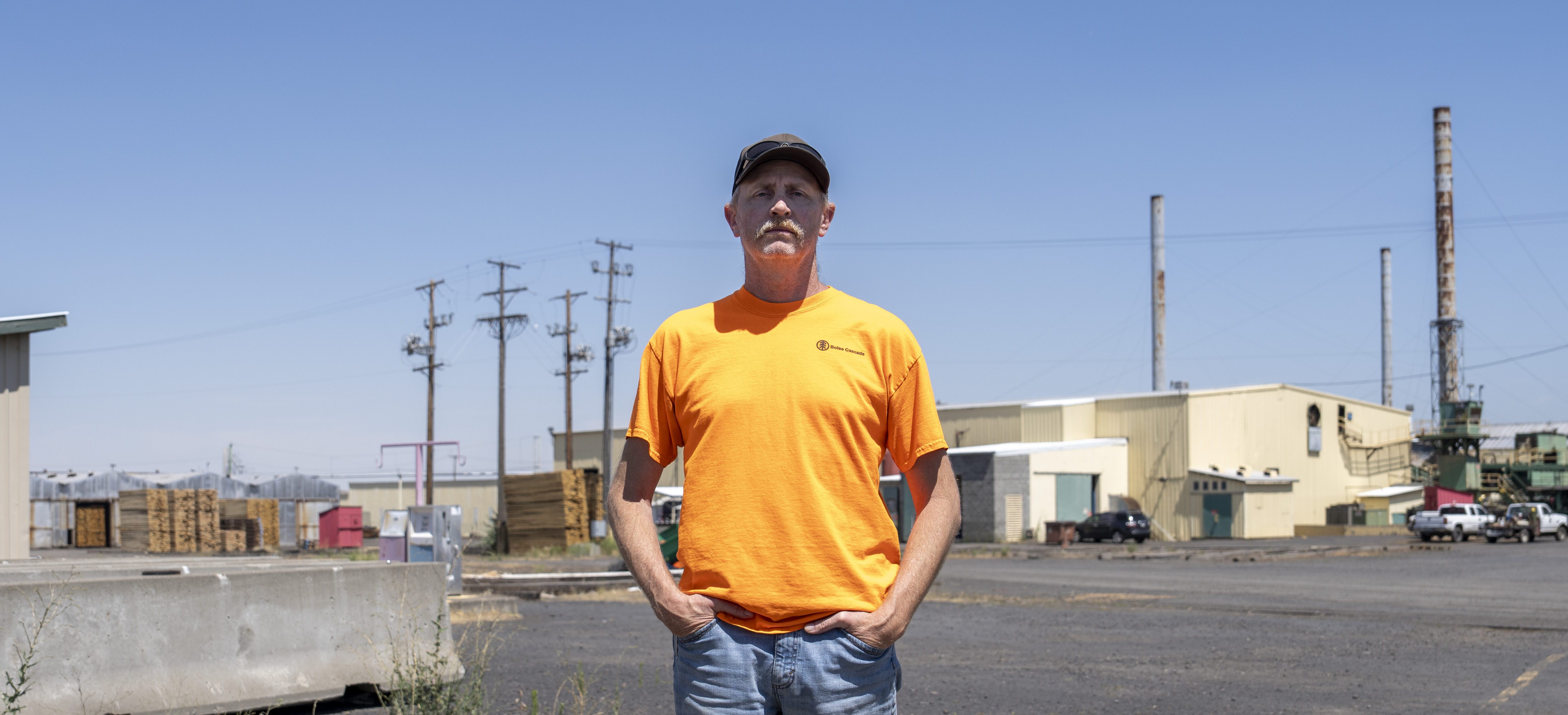Rural Oregon counties press for reprieve from coronavirus closures
Published 1:00 pm Monday, April 20, 2020

- A man walks in downtown Burns in southeast Oregon’s Harney County. Officials there want Gov. Kate Brown to allow the county to re-open businesses after coronavirus closures.
BURNS — In the next week or two, Samantha Landon will have to decide whether or not to close her three businesses in Harney County: a hair salon, a short-term rental and Bella Java, a bistro named for her love of coffee. Landon laid off eight employees she couldn’t pay in March, after social distancing orders took effect statewide and forced many businesses to close to stem the spread of the coronavirus.
She has been using her own money, including her federal stimulus check, to try to keep her businesses afloat. With almost no profit, she can no longer afford to pay overhead or wages.
Trending
“I won’t be able to order food unless I buy it on credit,” Landon said. “I have to accrue more debt to make it work. It would be ridiculous to keep going this way.”
Landon is among hundreds of small business owners in rural Eastern Oregon working to avoid a collapse they won’t come back from. County officials say they can’t afford to wait to reopen businesses and risk deeper economic damage.
Several counties sent letters to Gov. Kate Brown that requested a reprieve from sweeping business closures and asked to reopen businesses in a way that allows for social distancing.
Brown pledged on Tuesday to begin work on such a plan, but the timelines to reopen are murky.
Many rural business owners have only a matter of weeks before they will be forced to close, county officials say. Rural leaders are eyeing May 1 as a tentative target to start reopening.
“Businesses are struggling,” said Harney County Judge Pete Runnels, who was among the first rural leaders to reach out to Brown. “It will be harder and harder for them to come out of this at all.”
Trending
Harney County has no cases of COVID-19, and to residents in far-flung communities untouched by the pandemic, the necessity of the orders can seem questionable as businesses are pushed to the brink, Runnels said.
The county’s April 13 letter detailed potential steps business owners could take to help protect against the virus while resuming operations.
“We have abided by the rules,” the letter said. “We’ve seen them extended and we have continued with stricter controls, we just can’t hang on any longer.”
Within days, seven other eastern counties followed suit — Baker, Grant, Deschutes, Jefferson, Klamath, Union and Wallowa — and submitted a joint letter spelling out similar concerns and asking to talk with Brown to develop potential solutions.
The frustration extends beyond rural Oregon. Dozens of people staged a drive-by rally Friday past the state Capitol, calling on the governor to reopen the state. A larger gathering is planned for May.
Some state lawmakers from rural counties have also pointed out that hospitals are at grave risk, and Rep. Cheri Helt, R-Bend, sent a letter Thursday to Brown asking the governor allow hospitals to reinstate essential surgeries and procedures.
In rural Oregon, leaders say, the economic damage wrought by sustained closures will have a deeper impact on rural communities that already grapple with poverty. Small population bases will make recovery more difficult.
“If all these little businesses aren’t able to function and can’t make it back, it means a lot to rural Oregon because that is our economy,” said Susan Roberts, Wallowa county commissioner and chair of the Eastern Oregon Counties Association, which coordinated the joint county letter. “Our economics are based on all these little businesses interacting.”
Liz Merah, a spokesperson for the governor, said the Harney County letter is under review but did not confirm whether Brown’s office had also received the letter sent by the other Eastern Oregon counties.
Merah said reopening Oregon will be a gradual process, with public health and safety as the chief concerns. The governor’s medical advisory panel will analyze various social distancing options and state officials will collaborate with local leaders in this process, Merah said in an email. Brown has also pledged to coordinate decisions with her peers in Washington and California.
“Health outcomes will be the ultimate metric guiding decisions to reopen communities,” Merah said. “We will only reopen Oregon if the data shows we can do so without jeopardizing public health.”
Merah pointed to the positive impact of social distancing on slowing the spread of the virus.
“Staying home is saving lives, and we are seeing the cumulative effect of Oregonians’ actions in the latest projections,” she said. “It remains incredibly important that Oregonians continue to sustain these measures.”
Merah also noted that the governor has not issued a blanket mandate for all businesses to close. The order specifically referenced certain types of business, such as salons, and allowed others to remain open if they can abide by social distancing measures.
County officials who signed onto the letters to Brown said their communities are committed to social distancing. But they believe that responses to COVID-19 can be tailored to different counties.
“People understand the concern for their own families and communities,” Roberts said. “But those same people need to be able to make decisions that affect them in their area.”
The letter asked Brown to allow individual counties to make decisions about how and when to re-open businesses.
“We’re asking that she consider that individual counties be able to make these decisions for ourselves, while keeping with the tenets of health care,” Roberts said.
Some leaders in rural counties question whether their less populated areas need the same strict social distancing measures as densely populated urban areas.
“Being as isolated as we are, the social and physical distancing part are pretty normal just based on where we live,” said Malheur County Judge Dan Joyce.
Officials worry the potential loss will change the face of rural Oregon as family owned businesses shutter. They also fear longer-term impacts could mean population loss, rampant business closures and a loss of tax revenue for counties.
The ability for businesses to operate, even in a scaled-back fashion, could help prevent the worst outcomes, Runnels said.
“It’s a start, and it’s hope,” he said. “I think hope is more than anything what people need right now.”
For rural business owners, it’s a matter of weathering uncertainty and trying to hang on. Landon learned Friday that she would not receive the Small Business Administration relief loan for which she applied.
“It’s an emotional roller coaster,” Landon said. “One moment I’m like, ‘I can fight this, I can do that uphill battle,’ and then the next I’m choking back tears.”









